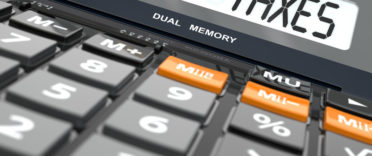What is marriage tax allowance?
 Marriage tax allowance is a tax break that enables a married person (or someone in a civil partnership) to claim a proportion of their spouse's personal allowance. In this article, we explain how marriage tax allowance is calculated, how you can make a claim and how it is paid.
Marriage tax allowance is a tax break that enables a married person (or someone in a civil partnership) to claim a proportion of their spouse's personal allowance. In this article, we explain how marriage tax allowance is calculated, how you can make a claim and how it is paid.
Additionally, marriage allowance can be backdated, which means married couples may be eligible to claim up to £1,258. Read on to find out how.
Marriage tax allowance - Am I eligible?
First things first - are you eligible? You may qualify for marriage tax allowance if all of the following apply:
- You are either married or in a civil partnership
- You were born after 6th April 1935
- Either you or your spouse is a non tax payer (earning less than £12,570 per year)
- Either you or your spouse is a basic rate tax payer (earning between £12,570 and £50,270)
How is marriage tax allowance calculated?
In order to qualify for marriage tax allowance, you need to be married or in a civil partnership and must have been born after 6th April 1935. Simply living together does not mean you qualify for marriage tax allowance and if you were born before 6th April 1935 then you would instead need to consider a different type of tax break called Married Couple's Allowance.
One of you will need to be a non tax-payer (earning less than £12,570 per year) and one must be a basic rate tax-payer (earning between £12,571 and £50,270).
Our table below shows how marriage tax allowance works when one partner isn't working.
Marriage tax allowance example
| Lower Earner | Higher Earner | |
| Married? | Yes | Yes |
| Born after 6th April 1935 | Yes | Yes |
| Income | £0,000 | £32,000 |
| Qualify for Marriage Tax Allowance? | Yes | Yes |
| Personal Allowance | £12,570 | £12,570 |
| Allowable tax-transfer thanks to Marriage Tax Allowance | -£1,260 | +£1,260 |
| Personal Allowance after transfer | £11,310 | £13,830 |
| Tax Difference | £0 | -£252 |
The spouse who has an unused amount of personal allowance can transfer some of their personal allowance to their partner. The amount for 2024/25 is £1,260 and once passed to the higher earner, they will benefit from having a higher personal allowance and will pay less tax as a result.
Our example above shows how marriage tax allowance can work when one partner is not working, however, it is important to consider how marriage tax allowance works when both partners are working.
By passing some of their personal allowance to their partner, the lower earner's personal tax allowance will be lowered as a result, meaning they will be taxed if they go on to earn more than £11,310 in a tax year. So, while a family may be financially better off overall, applying for Marriage Tax Allowance could result in the lower earner being worse off; a consideration for families that handle their finances separately. Below we give an example to show how this works.
Example: Total tax payable prior to claiming Marriage Tax Allowance
| Earnings | Personal Allowance | Tax Payable | |
| Lower Earner | £12,000 | £12,570 | £0 |
| High Earner | £25,000 | £12,570 | £2,486 |
| Total | £37,000 | £25,140 | £2,486 |
Example: Total tax payable after claiming Marriage Tax Allowance
| Earnings | Personal Allowance | Tax Payable | |
| Lower Earner | £12,000 | £11,310 | £138 |
| High Earner | £25,000 | £13,830 | £2,234 |
| Total | £37,000 | £25,000 | £2,372 |
Claiming marriage tax allowance has meant that the family in the example above is £114 better off overall.
When can you apply for marriage allowance?
There is no cut off as such and so you can apply straight away and the good news is that it is relatively straight forward to do so. You can apply online via HMRC's Marriage Tax Allowance application page.
How to claim marriage tax allowance
Firstly, log onto HMRC's Marriage Tax Allowance application page. You'll be asked the standard screening questions so that HMRC can confirm that you qualify, such as whether you are married, whether you were born after 6th April 1935 and that you have earned less than £12,570. Once confirmed, you'll need to provide your first name, surname, date of birth and national insurance number. If you experience any problems applying online, then you can apply over the phone, just call 0300 200 3300.
How many years can you backdate marriage tax allowance?
Once you have completed the application process (described above), you'll be notified that your application has been received and you will have the chance to apply for previous years' allowances retrospectively.
Of course, in order to qualify for the allowance for previous years, you will need to have met the criteria. Below we provide a simple table that confirms the maximum tax break available for each year, meaning you could claim up to £1,258 in tax breaks.
Marriage tax allowance maximum tax break available 2020 - 2024
| Tax Year | Max Tax Break |
| 2020/21 | £250 |
| 2021/22 | £252 |
| 2022/23 | £252 |
| 2023/24 | £252 |
| 2024/25 | £252 |
| Total | £1,258 |
The deadline for claiming marriage tax allowance for the 2020/21 tax year is April 5th 2025. Don't leave it until after that date, because once the deadline has passed, you'll be unable to claim for that year.
Don't forget: It is the non tax-payer who needs to apply to transfer their allowance, not the other way round.
How is marriage allowance paid?
In most cases, the allowance is paid by adjusting the higher earner's tax code, meaning they pay less tax over the remainder of the tax year. So, rather than receiving actual cash from HMRC or a marriage allowance rebate cheque, the higher earner will simply be paying less tax going forward. If the higher earner is self-employed then their tax bill will be adjusted accordingly via self-assessment.
How long does marriage allowance take to process?
It can take up to two months for HMRC to process the changes to the recipient's tax code. If the recipient is self-employed then the rebate should be processed when they file their tax return.
Do you have to apply for marriage tax allowance every year?
You do NOT have to apply every year. Your personal allowance will transfer automatically to your partner until one of you cancels the marriage allowance or you inform HMRC that your circumstances have changed, eg, because of divorce, employment pushing you into a higher-rate tax threshold or death.
Once you've applied, you (or your partner) will get the extra allowance either:
- By changing the higher earner's tax code, which can take up to two months.
OR - When they file their self-assessment tax return.
How do I stop marriage tax allowance
If you wish to stop marriage tax allowance it is relatively straightforward, you simply need to visit HMRC's marriage tax allowance page (in the same way that you apply for marriage tax allowance) and confirm that your circumstances have changed. You will need full name, date of birth and national insurance number and should take no longer than 5 minutes in total.




